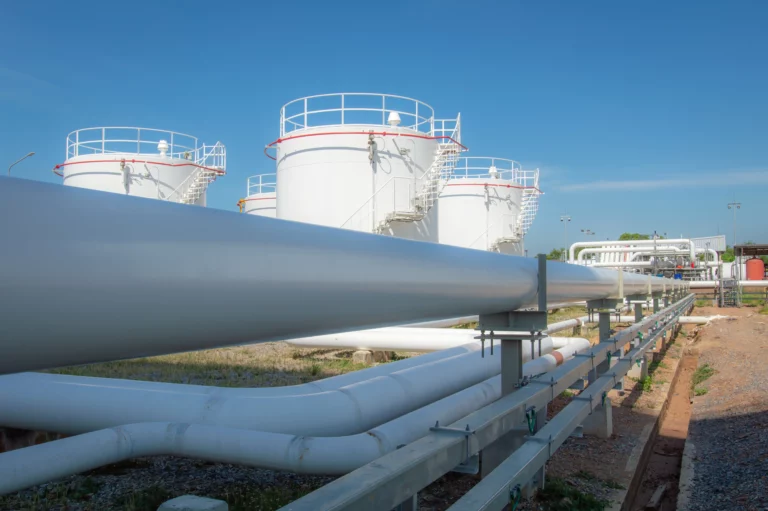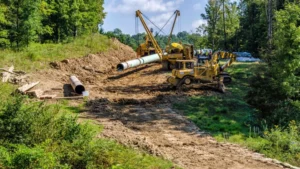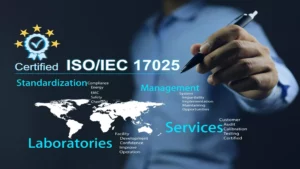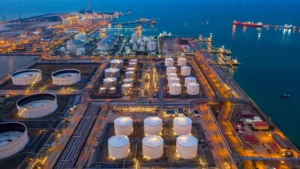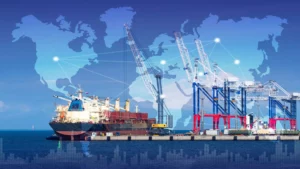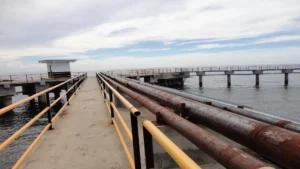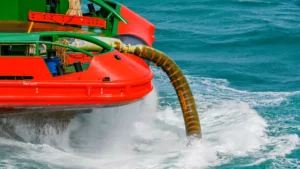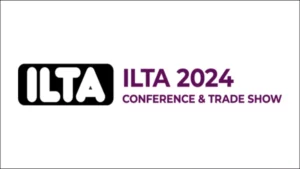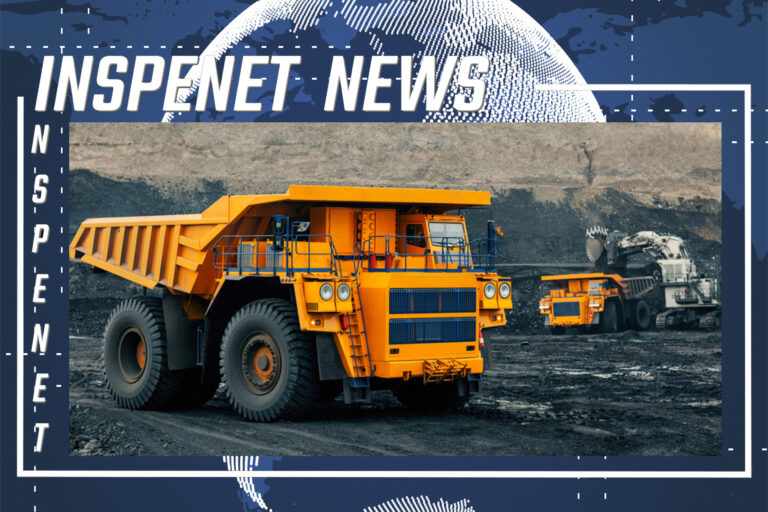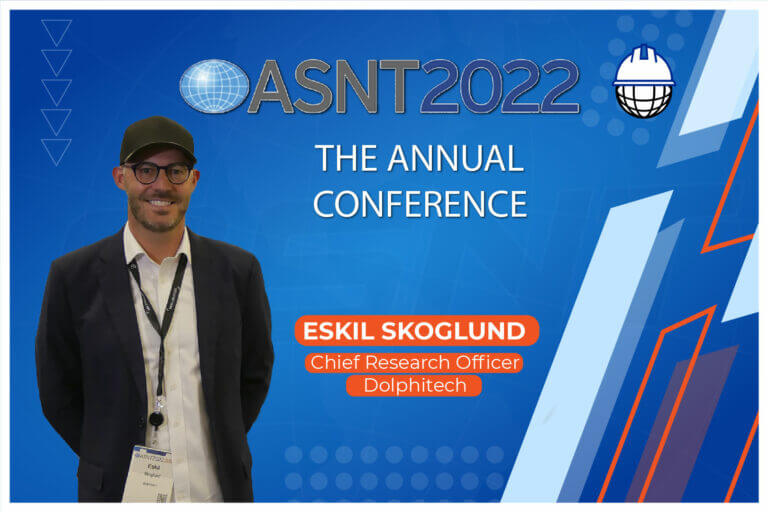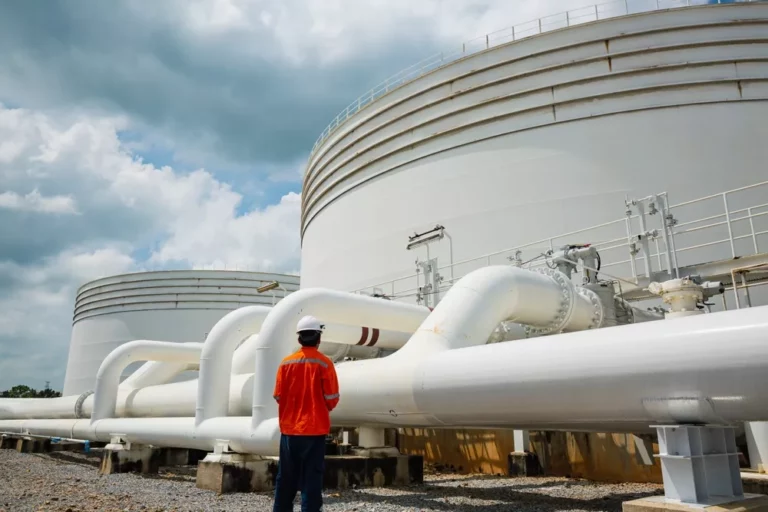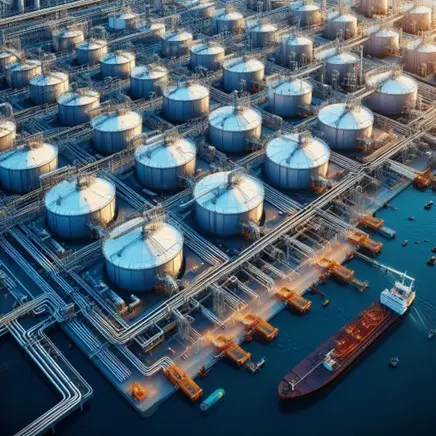Introduction
The oil industry is segmented into three fundamental sectors: upstream, midstream and downstream. Midstream asset management , particularly in the oil and gas industry, involves the planning, operation and maintenance of infrastructure related to the transportation and storage of hydrocarbons, in order to ensure that these products reach their intended destinations safely and time.
The middle segment of the oil industry covers a series of logistics activities, including: storage, transportation and distribution, fundamental to connecting the upstream and downstream sectors of the hydrocarbon value chain. The selection of the means of transportation varies depending on the product and the distance, ranging from small connecting pipelines to massive cargo ships that make transoceanic voyages.
Midstream sector in the hydrocarbon value chain
The midstream sector, closely associated with the downstream sector, encompasses the transportation, storage and marketing operations of various products derived from fossil fuels extracted in the upstream phase.
Crude oil and its derivatives are transported from production points to downstream refineries through pipelines and other transportation systems. Simultaneously, the collected natural gas is transported from processing facilities to downstream consumers through a network of gas pipelines.
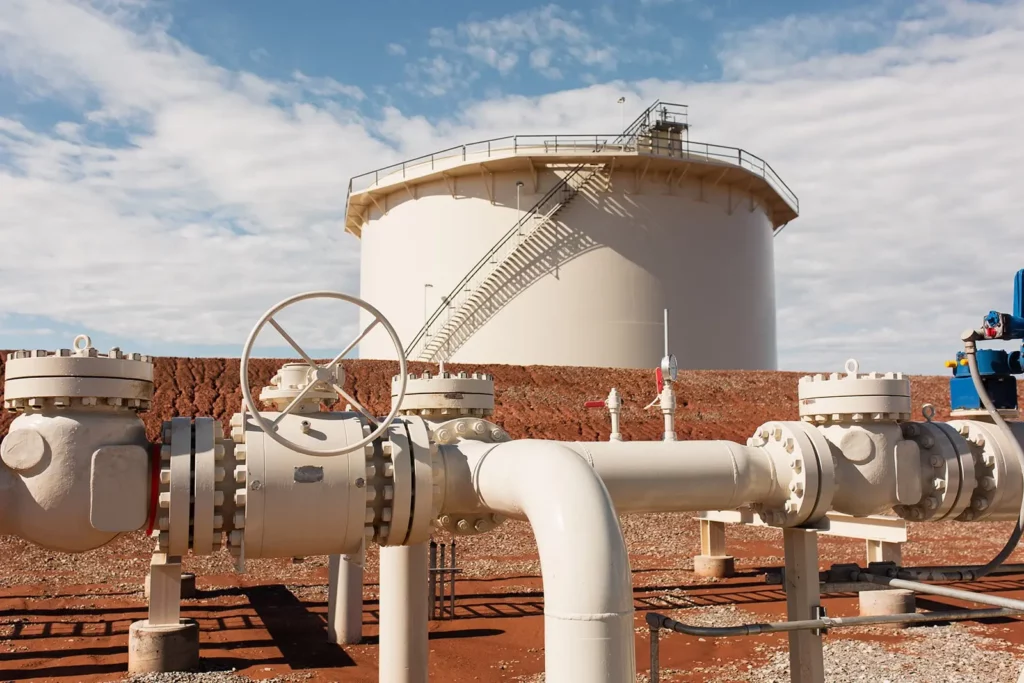
IBR-Based Midstream Asset Management Strategies
Risk-Based Inspection (RBI) plays a significant role in midstream asset management, particularly in the oil and gas industry, for several reasons:
- Optimization of Inspection activities: The IBR methodology allows assets to be prioritized for inspection according to the associated risks. Focus inspections on priority assets, maximizing resources by concentrating them on equipment with higher risks and setting aside assets with lower risks.
- Reduced maintenance costs and downtime: Implementing a Risk-Based Inspection program can result in an overall reduction in risk for assessed assets, reducing maintenance costs and unplanned downtime.
- Improved security and regulatory compliance: It is significant to preserve the integrity of assets, ensure security and compliance with regulations, which facilitates the understanding and acceptance of risks, thus contributing to maintaining the license to operate effectively.
- Maximizing operational efficiency: Optimizes maintenance by reducing the number of inspections and the volume of data, through the use of this methodology a reduced and precise data set is generated, thus maximizing operational efficiency.
- Preservation of asset integrity: Risk management throughout the life cycle through the use of IBR contributes to preserving the integrity of midstream assets, ensuring their reliability, safety and efficiency throughout their life cycle.
Asset Integrity Management
The efficient and safe operation of processes in the chemical, oil and gas industry is intrinsically linked to maintaining optimal levels of integrity in equipment that handles process conditions such as high pressures in vessels, tanks and pipelines. Effective midstream asset management of this equipment is critical to mitigating the risk of failure, thereby avoiding costly delays and downtime.
Asset Integrity Management (AIM) programs have evolved from engineering design standards, such as those applied to boilers and pressure vessels, to solutions based on technical data. Critical pressure-handling assets in oil, gas and chemical operations must operate with maximum reliability, safety and efficiency throughout their entire life cycle.
These solutions incorporate business practices that foster efficient and profitable asset performance. This whitepaper will explore the key components of a comprehensive risk-based AIM solution, combining engineering, inspection and support services, to provide a complete understanding of risk.
Midstream asset management helps organizations improve stakeholder value by preserving organizational license to operate and achieving/improving return on asset value. This approach covers the entire life cycle, from design verification, manufacturing and installation to appropriate operational, inspection and testing practices, as well as effective management of identified equipment damage and degradation.
Most asset risk management activities focus on the in-service operational phase of the life cycle. It represents the longest and most fundamental phase of an asset’s useful life, which is why numerous facilities have chosen to employ independent third parties for the efficient implementation of mechanical and asset integrity programs, with the aim of achieving more effective management.
Midstream asset management activities
Midstream refers to points in the oil production process that fall between the upstream and downstream phases. In particular, midstream activities encompass the storage, processing and transportation of petroleum products.
These activities can be carried out by companies specialized in the operation of ships, pipelines or storage facilities. Understanding these activities is important to have a comprehensive view of workflow in the oil and gas industry.
Midstream activities are typically considered an integrated part of other operations in most of the global oil and gas industry, spanning midstream and downstream, occurring after the initial phase of production, known as upstream, and extending up to the final point of sale.
Various oil and gas companies call themselves integrated because of their ability to merge upstream, midstream, and downstream activities as part of their overall operations. A notable example is the Keystone Pipeline , operating in Canada and the United States, opened in 2010 and currently wholly owned by TransCanada Corporation.
Midstream asset management operations
Midstream operations involve the treatment of products for waste removal and compression before transportation to subsequent markets, that is, end users. As an intermediate phase in oil production, it plays a significant role in facilitating the transportation of crude oil from oil fields and converting it into useful crude products for end users.
The process begins in the upstream phase, where, after drilling and extracting the oil, an oil pipeline is used to transport the crude hydrocarbons from the well to a central facility. Subsequently, in said facility, the hydrocarbons are stored, from their processing and separation into various components. Finally, the processed products are transported for storage and further processing into products in the downstream phase, for consumption by end users.
The midstream segment encompasses the transportation, storage and marketing operations of crude oil, natural gas and refined products. Mainly two types of companies operate: integrated midstream companies and independent ones.
The former combine upstream, midstream and downstream activities to maximize efficiency in oil and gas production. On the other hand, independent midstream companies provide oil and gas operations services that require access to midstream assets.
The transfer of crude oil in its original state is carried out mainly through two modalities: transport by tanker trucks along interregional river routes and through pipelines, used for most of the oil’s journey in some phase of its transport.
Once extracted and separated from natural gas, pipelines take the products to another transportation entity or directly to a refinery. Petroleum products are then moved from the refinery to the market by tankers, trucks, rail cars or, again, pipelines.
Conclusion
Risk-Based Inspection (RBI) is positioned as an important tool in the management of midstream assets. It allows risks to be identified and prioritized, achieving more efficient and proactive management. This approach strengthens operational security and contributes to the long-term sustainability of midstream operations, supporting responsible and effective management of energy infrastructure.
References
Own source.



